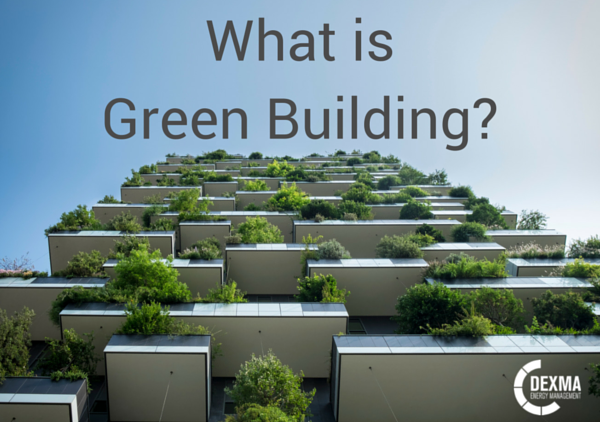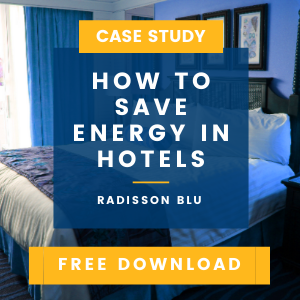After publishing the last report about this architecture’s trend, today we would like to come closer to the concept of Green Building and its relation with Energy Efficiency.
Green Building: A Simple Definition
When you start reading about green building you notice that there are many definitions for it circling around. Why? Well, that’s easy, and we will talk about this further in the article: there are many qualifications to be considered a green building.
Some countries even define what requisites to be a green building and make building owners pass certifications in order to let them claim that they have a sustainable building.
Is green building the same as energy efficiency?
Simple answer: NO
Green Building is sustainable architecture that has some characteristics and laws that claim it is energy efficient, but what is the secret behind green building? Other architecture simply talks about construction materials.
Green Building is not necessarily energy efficient and here is why.
Rather than pertaining to the systems included in the building and technology to analyze performance, green building is mainly about materials and architecture solutions.
Energy efficiency needs to be implemented into any green building, which would in theory be a consideration during construction. For example when implementing a heater or an air conditioning unit. If not during construction, then it is highly recommendable to start measuring the very moment the building begins functioning.
For instance, the Radisson Blu Hotel in East Midlands is a BREEAM certified building that , after a couple of years of business, found they were sustainable but not efficient.
What did they need to do after that realization? They needed to start an energy efficiency plan immediately (you can read about it in this free-to-download case study)
Overall the Disadvantages Outweigh the Advantages of Green Building Due to Expense:
- Certification requires labor hours to collect and submit the paperwork
- USGBC (United States Green Building Council) one even has to pay an initial fee just to be apart of the GBCI (Green Building Certification Institute) even before you register for a project.
- Certifications are timely and require meticulous recording
- Certifications tend to focus too much on one vital green building practice and neglect the others.
For example LEED may focus on indoor environment air quality and neglect important topics like land-use ecology. Other opponents say that green building should be…
“organic and innovative, not something that entails endless checklists and requirements”
The LEED Program
One of the most popular green building certification programs is the Leadership in Energy and Environmental Design (LEED) program. They were developed by the nonprofit US Green Building Council and pertains to a set of rating systems for first the design, then the construction as well as operation and maintenance of not only green buildings but also homes and neighborhoods.
It further aims to help building owners and operators gain responsibility in the environment as well as use resources efficiently.
LEED started up in 1994 and grew from one new construction to an interrelated system of standards pertaining to aspects rooting from the design and growing to the construction of buildings.
Now many U.S. federal as well as state and local agencies require and reward when a building has LEED certification.
How to become certified?
The process of certification is granted by the GBCI and includes two applications with both design and construction credits.
The design credits include those that are under jurisdiction of the architect and engineer and then are documented in the official construction drawings.
Further, the construction credits involve those from the contractor and are documented during construction and commissioning of the building.
However how do statistics indicate LEED´s Performance?
In one study of 953 NYC office buildings, 21 LEED certified buildings collectively showed no energy savings compared with non-LEED buildings, although LEED Gold buildings “outperformed other NYC office buildings by 20%”.
Therefore, even if a building is LEED certified, it does not indicate it will be energy efficient.
Advantages and disadvantages?
LEED certified buildings are expected to use resources efficiently in comparison to conventional buildings however this is not always the case.
For instance in New York City, according to analysis of energy and water, LEED certification does not make the building efficient. Overall pursuing LEED certification simply rises costs because of the correspondence with USGBC. Added design aide consultants as well as the hiring of Commissioning Authority.
These costs could be covered in the long run IF lower than industry standard operational costs are saved.
In fact there are studies that suggest that an initial up-front investment of 2% extra yields over ten times that initial investment over the life cycle of the building. But this is far from guaranteed…
Some more overarching disadvantages include:
- LEED´s lack of penetration into smaller markets even though it is already involved in the large industrial areas.
- LEED´s rating system is not case sensitive in that it does not vary enough in regard to local environmental conditions. For instance a building in Washington would receive similar credits as a building in Texas for water conservation even though it would be more important in Texas.
LEED Buildings: some Examples
- The Philip Merrill Environmental Center is known as the greenest building ever constructed in the US when it was built. It was the first to receive a Platinum rating from the LEED.
- DavidL Lawrence Convention Center, first convention center to gain both Gold then Platinum in with further construction.
- Apogee Stadium at University of north Texas, first stadium with Platinum certification
The BREEAM Method
On the other hand the BREEAM Method which is the Building Research Establishment Environmental Assessment Methodology, was established in the UK in 1990 and was started to assess, rate, and certify the sustainability of buildings.
More than 250,000 buildings have been BREEAM certified and over a million are registered for certification – many in the UK and others in more than 50 countries around the world.
Overall, the BREEAM method strives to raise the awareness of owners, designers, and thus the operators of how a sustainable approach can be very beneficial. The goal is for sustainable solutions to be adopted and for the market to recognize their achievements.
By assessing scientifically based criteria, BREEAM covers a range of issues in categories to evaluate….
- Energy and water use
- Health
- Pollution
- Transportation
- Materials
- Waste
- Ecology
- Management processes
The four different scales are PASS, Good, Very Good, Excellent, Outstanding as compared to the Platinum and Gold levels of LEED….These benchmarks and targets encourage one to innovatively achieve these sustainable targets.
With research continuing to advance, it is coming into question whether this method is effective due to its added costs. Many believe that sustainable buildings are detrimental due to the added costs for design and construction.
Sweett Group performed research investigating how BREEAM integrates itself into projects by providing sustainable options however they add little or no capital cost to the project’s development.
But taking this step is not always easy… how could you know if going green or going efficient is the best decision for your building?
And, in addition, if I want to start an energy efficiency plan in my green building… How should I get started? What to do first?
To bring some light and fresh air for those of you facing this situation, you have a free, quick, and easy-to-use new tool, the Energy Grader.
The Energy Grader is an online calculator that will give you in 72 h a customized report about your building’s energy savings potential. It includes a benchmark of your electricity prices (yes, you can discover if your rates are fair compared to your industry).





